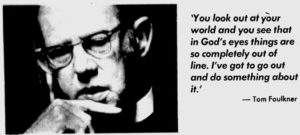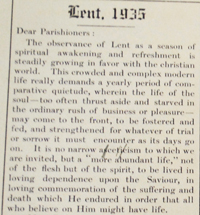St. George’s History comprises individual articles, documents and collections around the 300 year history of St. George’s Episcopal Church, located in Fredericksburg Virginia. This site is unrelated to St. George's main website.
Supplementing them are a category-based search, a content index and a timeline. We have two tour documents - a building summary and a 15 minute walking tour you can take in the church.
If this is your first visit, check out the 2 tours - building summary and a 15 minute walking tour.
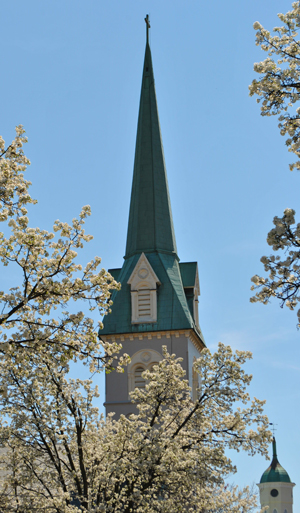
Recent articles

Edward McGuire’s “Centennial Sermon”, Oct. 4, 1835
McGuire’s Centennial Commemoration Sermon of 1835 was delivered 100 years after the sexton Susannah Livingston was paid for her work in that capacity 700 pounds of tobacco and “for cleaning the churchyard.” This is evidence the building was complete for occupancy at the time.

Bishop Johns on the “Life and Labors” of Edward McGuire
This article appeared in 1859 a year after Bishop John Johns delivered a funeral oration for Rev. McGuire who died in 1858. We don’t have Johns funeral oration for Rev. McGuire. However, a year later this article appeared in the “Protestant Episcopal Quarterly Review”. It was entitled “Rev. Edward C. McGuire, D. D. Sketch of his Life and Labors”. Johns name does not appear with the article but a copy of the article is at Virginia Theological Seminary with his name attached to it.

Once A Village – remarks about high/low church at St. George’s
Once a Village was written by Kate Doggett Boggs and published in 1944. This selection reflects the high/low church controversy of the late 19th century

How the Pledge card developed
The pledge system developed at the end of the Civil War to help the church pay for its damages. It would cover building maintenance and the rector’s salary as well as other charitable causes.

Fielding Lewis and the Colonial Vestry
Lewis served off and on in the St. George’s Vestry for 26 years from 1753 to 1779. He served this body long than any other. What was his role and activities ?

Kitchen Renovation 2012-2014
In the end of the project in 2014, the church had renovated its kitchen to support new demands on its use and also created a substantial sum to reduce the debt from the Nave Renovation. The latter debt was paid before the end of 2014 (August).
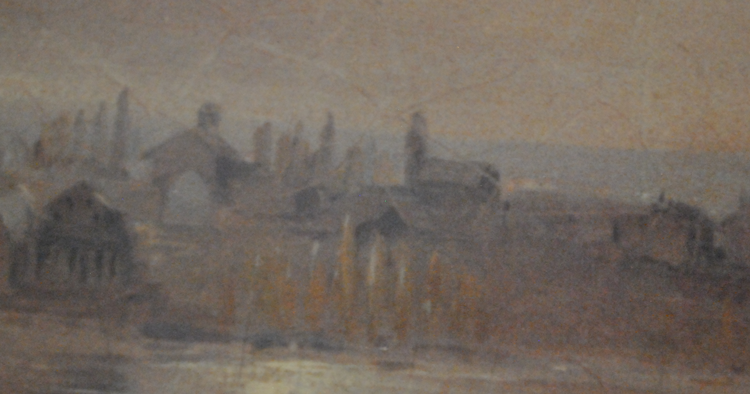
Economic background for the Second Church (1815)
The Second Church was created in 1815 because major repairs were needed on the first church. But was it more than that ? Did it reflect the beginnings of the revival of the Episcopal church after a decline since the revolutions or confidence of Rev. McGuire ? Was a new church needed to cater to a new population and economic environment in Fredericksburg? The latter will be explored with some unpublished research from Paula Felder
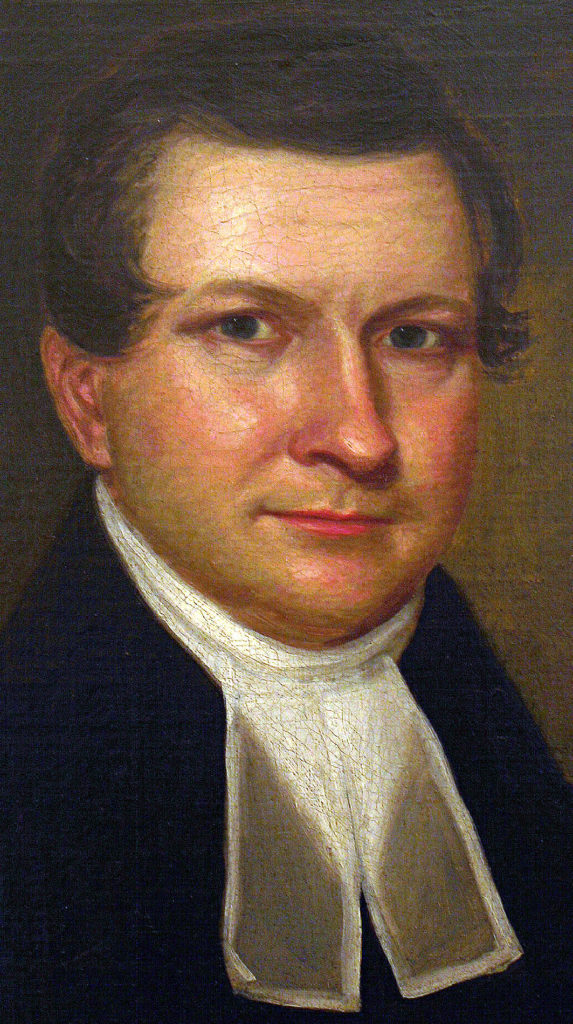
Rev. Edward McGuire’s Obituary, Oct. 12, 1858
Not a typical 19th century biography for a non-typical man.
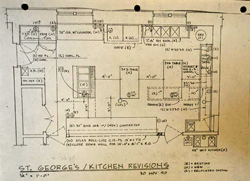
The ECW remake the kitchen, 1992
“Gentlemen if the ladies decide they want a new kitchen, they will have it.” Attributed to Mary Freeman Funk by Betty Poole. The kitchen project took place in 1992 in the midst of a church dealing with a budget crisis. The amazing fact is not that the ladies did the work on their own to raise the money, plan for a contractor but that the Vestry accepted it almost as it was presented in the midst of financial problems.
1. Carrol Quenzel's History of St. George's
Quenzel's 1951 history is still the standard for the church. He was a librarian for Mary Washington College as well as being active at St. George's, helping to create the St. Georgian newsletter as well as a part of the Vestry. We have the entire book online which was published by St. George's
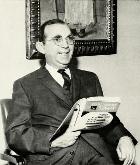
2. The Three Churches of St. George's - Barbara Willis
Barbara Willis was a local historian and writer and long time St. Georgian with her husband Mac. This paper is a detailed summary of the evolution of St. George's church from its wooden colonial church to the impressive 1849 brick building we have today.
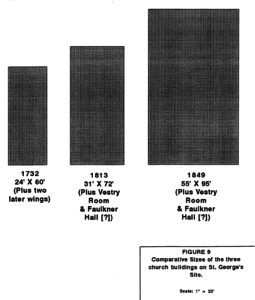
The Civil War may be the most popular historic topic in all of our history. The church served in 3 capacities - as a fortress, center of revival and as a hospital. We have a 9 part series on our role and relationship to Fredericksburg.

McGuire served all 3 churches over the course of 45 years. He is probably the most influential of all our rectors in all phases of ministry from preaching, teaching, and outreach. Trip Wiggins, our archivist, wrote this for a Sunday school class and has been teaching classes for years

5. Charles Syndor on Social Policy
Charles Sydnor served St. George's from 1972-2003 and was responsible for furthering Thomas Faulkner's outreach ministries and creating new ones. This paper he wrote in 2009 was for an adult forum in that year.
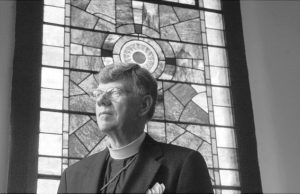
6. Tom Faulkner confronts the Vestry on race
Faulkner served St. George's for 30 years from 1946-1976. During these years racial policies were paramount, especially 1954, in the year of Brown vs. Board of Education, Faulkner was challenged by the Vestry on the role of Blacks in our service. He was able to move St. George's toward racial justice that other rectors would further
